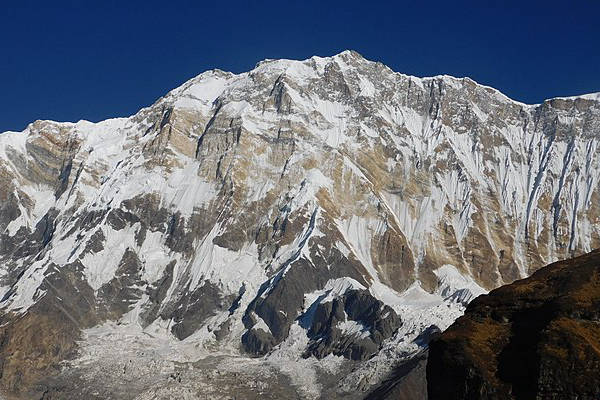

According to Reinhold Messner in Annapurna: 50 Years of Expeditions in the Death Zone, Annapurna has never become a fashionable mountain to climb but it remains a credible goal for climbers who wish to push the limits of climbing (150) because it is more difficult to climb than Everest or other "easy eight-thousanders" (149). But to mountain climbers, Annapurna is the site of some of the greatest achievements in high-altitude mountaineering. Although it is the tenth highest mountain in the world and the first mountain above 8000 metres to be successfully climbed, Annapurna is also not as well known to the general public as Mount Everest simply because it is not the highest mountain in the world. Thus, although its name means "the Provider" or "Goddess of the Harvests" in Sanskrit, the hazards associated with Annapurna still make it a difficult mountain to see up close, much less climb. Its south face has the largest and most difficult "big-wall" ice cliff in the Himalayas. It is swept constantly by avalanches in the north. At 8091 metres in what was once a little-known part of Nepal, Annapurna is accessed from the north by a valley that was unmapped and unknown even by the villagers of Pokhara, its nearest town.

Since 1950, Annapurna has been known in climbing circles as one of the world's most dangerous mountains to climb.


 0 kommentar(er)
0 kommentar(er)
